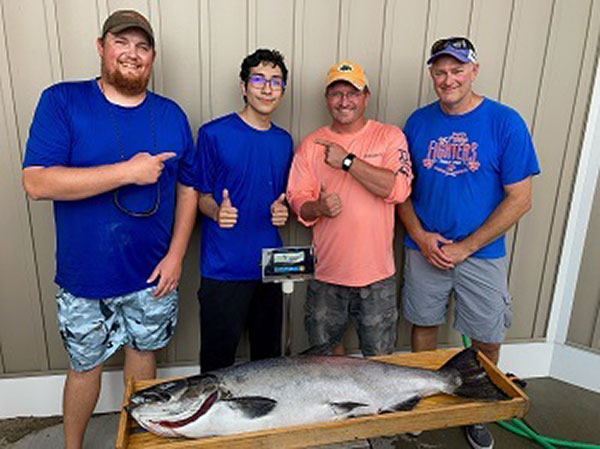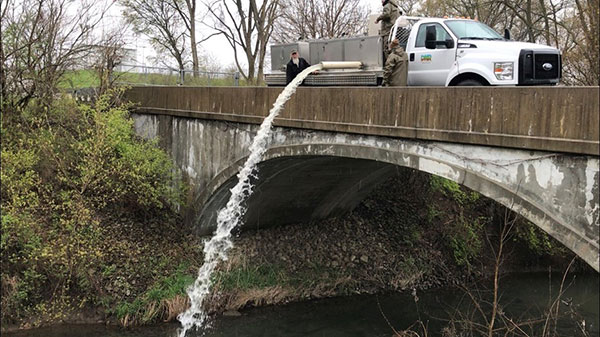- Details
MDNR Report
The abundance of Chinook and coho salmon in the Betsie and Platte rivers every September – during what are known as “fall fish runs” – draws anglers eager for this unique fishing opportunity in northwest Michigan.
Unfortunately, the season also sometimes brings illegal fishing activity and community disruption, and Michigan Department of Natural Resources conservation officers are working with local property and business owners to improve the situation.
Conservation officers are conducting enhanced patrols to reduce violations ranging from illegal fishing, camping and parking to trespassing, littering and noise complaints.
“Local businesses and communities open their doors and welcome anglers every fall,” said Lt. Joe Molnar, the DNR's district law supervisor who oversees officers in northwest Michigan. “Many people treat the area and fishing resources with care and respect, but those who live and work in these communities are tired of those who continue to snag fish, litter and exhibit poor behavior.”
- Details
MDNR Report
 Luis Ricardo Hernandez Martinez with State Record King
Luis Ricardo Hernandez Martinez with State Record King
Using a Moonshine raspberry carbon spoon lure this past weekend, an angler from Ortonville, Mich. turned in a new state-record king salmon.
Luis Ricardo Hernandez Martinez was trolling with Capt. Bobby Sullivan of Icebreaker Charters on Lake Michigan near Ludington early Saturday morning when he caught a Chinook salmon weighing in at 47.86 pounds and measuring 47.5 inches.
- Details
IDNR Report
DNR’s hatchery staff recently completed spring stockings for Lake Michigan and its tributaries, adding more than 589,100 trout and salmon to public waters.
Locations stocked include East Chicago Marina, East Branch Little Calumet River, Salt Creek, Trail Creek, and the St. Joseph River. Among the fish stocked were 90,280 brown trout fingerlings, 77,166 Coho salmon yearlings, 225,776 Skamania steelhead yearlings, and 195,915 Chinook salmon fingerlings.
Due to the COVID-related cancellation of the spring 2020 egg take at the Little Manistee Weir in Michigan, no winter-run steelhead yearlings were stocked. To make up for this shortfall in fish production, Indiana raised extra Skamania steelhead yearlings and obtained twice as many brown trout as usual from Illinois DNR.
- Details
IDNR Report
 Indiana DNR Stocking Rainbow Trout
Indiana DNR Stocking Rainbow Trout
The opening day of trout season for inland streams kicks off April 24 at 6 a.m.
DNR biologists have been stocking rainbow trout across the state.
- Details
By Louie Stout
The ice is disappearing on Lake Michigan and the cohos are pushing into the shoreline and the mouths of tributaries.
Indiana Lake Michigan Biologist Ben Dickinson said anglers were catching quite a few coho at pier heads around the southern end of Lake Michigan.
“The ice is gone now and the boats are starting to get out and have success at creek mouths and near shore,” he said. “Coho, lake trout, browns and an occasional king has been caught. It’s sporadic, but the fish are there.”
The spring St. Joseph River steelhead run into Indiana waters is a week or so away because the water temperature remains cold due to the snow runoff.





